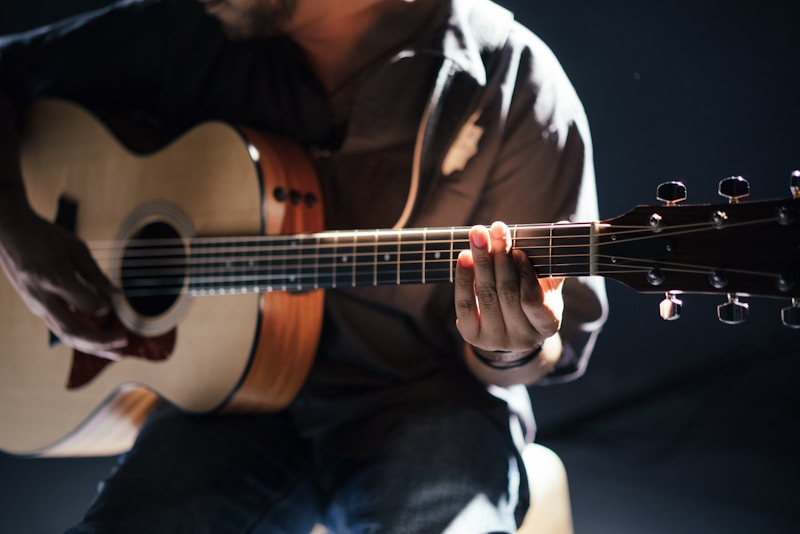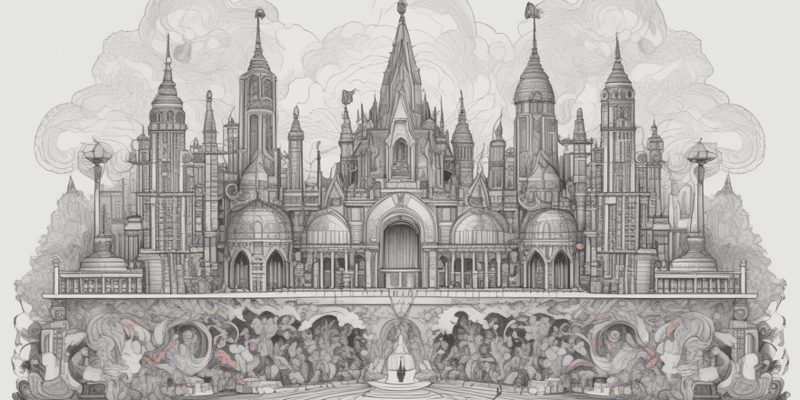9 Questions
What are the three components of rap?
Who is credited with creating the shift from simplistic old school flows to more complex flows near the beginning of hip hop's new school?
Which hip-hop genre brought rapping about crime and the gangster lifestyle into the mainstream?
Which musical form is rap a primary ingredient of?
What is the standard form of rap notation?
Which country did Punjabi rap originate in?
Who is considered the first rapper at the beginning of the hip hop period, at the end of the 1970s, and was also hip hop's first DJ?
What is the genre of music that combines Punjabi lyrics with rap beats called?
What is the term for the competition between two or more rappers in front of an audience?
Summary
The Origins and History of Rap Music
-
Rap is a musical form of vocal delivery that involves rhyme, rhythmic speech, and street vernacular, usually performed over a backing beat or musical accompaniment. It is a primary ingredient of hip hop music, though the origins of rap predate hip-hop culture by many years.
-
The components of rap include "content" (what is being said e.g. lyrics), "flow" (rhythm, rhyme), and "delivery" (cadence, tone).
-
Precursors to modern rap include the West African griot tradition, certain vocal styles of blues, jazz, an African-American insult game called playing the dozens, and 1960s African-American poetry.
-
The use of rap in popular music originated in the Bronx, New York City in the 1970s, alongside the hip hop genre and cultural movement. Rapping developed from the role of master of ceremonies (MC) at parties within the scene, who would encourage and entertain guests between DJ sets, which evolved into longer performances.
-
Rap is usually delivered over a beat, typically provided by a DJ, turntablist, or beatboxer when performing live. Much less commonly, a rapper can decide to perform a cappella, meaning without accompaniment of any sort, beat(s) included.
-
Stylistically, rap occupies a gray area between speech, prose, poetry, and singing. The word, which predates the musical form, originally meant "to lightly strike", and is now used to describe quick speech or repartee.
-
Scholars traced the style of rapping created by African-Americans to the Black church and call-and-response culture, as well as African-American singing groups during the blues, jazz, and gospel era.
-
Jazz, which developed from the blues and other African-American and European musical traditions and originated around the beginning of the 20th century, has also influenced hip hop and has been cited as a precursor of hip hop.
-
The early rapping of hip-hop developed out of DJ and Master of Ceremonies' announcements made over the microphone at parties, and later into more complex raps.
-
One of the first rappers at the beginning of the hip hop period, at the end of the 1970s, was also hip hop's first DJ, DJ Kool Herc. Herc, a Jamaican immigrant, started delivering simple raps at his parties, which some claim were inspired by the Jamaican tradition of toasting.
-
By the end of the 1970s, artists such as Kurtis Blow and The Sugarhill Gang were starting to receive radio airplay and make an impact far outside of New York City, on a national scale.
-
Old school rap (1979–84) was "easily identified by its relatively simple raps" according to AllMusic, "the emphasis was not on lyrical technique but simply on good times".
-
Rap music has influenced and been influenced by many other musical genres, and has become a global phenomenon with a huge influence on popular culture.Understanding Flow in Hip-Hop: A Comprehensive Overview
-
The golden age of hip hop (mid-1980s to early '90s) saw a transformation of hip-hop lyricism, with artists like Chuck D, Big Daddy Kane, KRS-One, and Rakim inventing complex wordplay and lyrical kung-fu.
-
"Flow" refers to the rhythms and rhymes of a hip-hop song's lyrics, with staying on the beat being central to rap's flow.
-
Old school flows were basic, while Melle Mel is cited as the MC who epitomizes the old school flow.
-
Artists and critics often credit Rakim with creating the overall shift from simplistic old school flows to more complex flows near the beginning of hip hop's new school.
-
Biggie introduced a newer flow that dominated from 1994 to 2002, and Method Man was one of the emcees from the early to mid-'90s that ushered in the era of flow.
-
Rappers like MF Doom and Eminem have exhibited a style of rap that spills over the boundaries of the beat, closely resembling spoken English.
-
The standard form of rap notation is the flow diagram, where rappers line-up their lyrics underneath "beat numbers."
-
To successfully deliver a rap, a rapper must also develop vocal presence, enunciation, and breath control.
-
The ability to rap quickly and clearly is sometimes regarded as an important sign of skill.
-
The term emcee, MC or M.C., derived from "master of ceremonies", became an alternative title for a rapper, and for their role within hip-hop music and culture.
-
For some rappers, there was a distinction to the term MC, such as MC Hammer who acquired the nickname "MC" for being a "Master of Ceremonies."
-
Uncertainty over the acronym's expansion may be considered evidence for its ubiquity: the full term "Master of Ceremonies" is very rarely used in the hip-hop.The Many Subjects and Styles of Rap Music
-
"Party rhymes" and love/sex references have been a staple of hip-hop music since its early days
-
Some hip-hop artists, such as KRS-One, Hopsin, and Public Enemy, are known for their sociopolitical subject matter
-
Gangsta rap, popularized by N.W.A, brought rapping about crime and the gangster lifestyle into the mainstream
-
Materialism has been a popular topic in hip-hop since the early 1990s, with rappers boasting about their wealth and possessions
-
Christian rap is currently the most commercially successful form of religious rap
-
Rappers use literary techniques such as double entendres, alliteration, and wordplay found in classical poetry
-
Many hip-hop listeners believe that a rapper's lyrics are enhanced by a complex vocabulary
-
African-American English has had a significant effect on hip-hop slang and vice versa
-
The effects of rap music on modern vernacular can be explored through the study of semiotics
-
There are two kinds of freestyle rap: scripted and unscripted (off the dome)
-
Battle rapping, which can be freestyled, is the competition between two or more rappers in front of an audience
-
New musical styles and genres have developed that contain rapping, such as rap rock, hip house, and grimeThe Rise of Punjabi Rap: A Summary
-
Punjabi rap is a genre of music that combines Punjabi lyrics with rap beats.
-
The genre originated in the UK in the 1990s with artists like Apache Indian and Bally Sagoo.
-
The most popular Punjabi rap song in the US is "Mundian to Bach Ke" or "Beware the Boys" by Panjabi MC and Jay-Z.
-
Although the song had been released previously, the mixing with Jay-Z popularized the genre further.
-
There have been a number of female rap stars in the genre, including Lauryn Hill, MC Lyte, Lil' Kim, Missy Elliott, Queen Latifah, and Nicki Minaj, among others.
-
There is also a deaf rap artist named Signmark.
-
Punjabi rap has been criticized for promoting violence and misogyny, but some artists have used the genre to address social issues.
-
The genre has also faced censorship in India due to its explicit content.
-
Punjabi rap has become increasingly popular in India, with artists like Honey Singh and Badshah achieving mainstream success.
-
The genre has also influenced other genres of music, including Bollywood music.
-
Punjabi rap has a global audience, with fans in countries like Canada, the US, the UK, and Australia.
-
The genre continues to evolve, with artists experimenting with new sounds and collaborations with artists from other genres.
Description
Test your knowledge on the fascinating history and evolution of rap music with our quiz! From its origins in West African griot tradition to its modern-day global influence, this quiz will cover the key milestones, styles, and subjects of rap music. You'll learn about the components of rap, the evolution of flow, the many subjects and styles of rap, and even the rise of Punjabi rap. So, whether you're a die-hard rap fan or just curious about this unique genre, take our quiz



